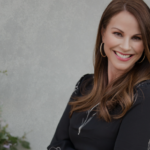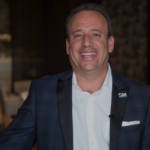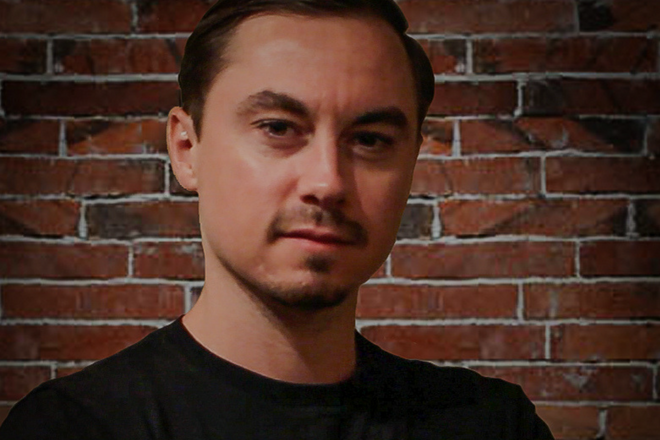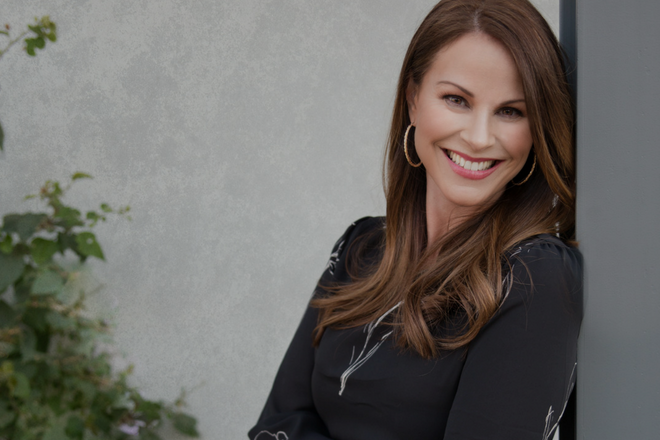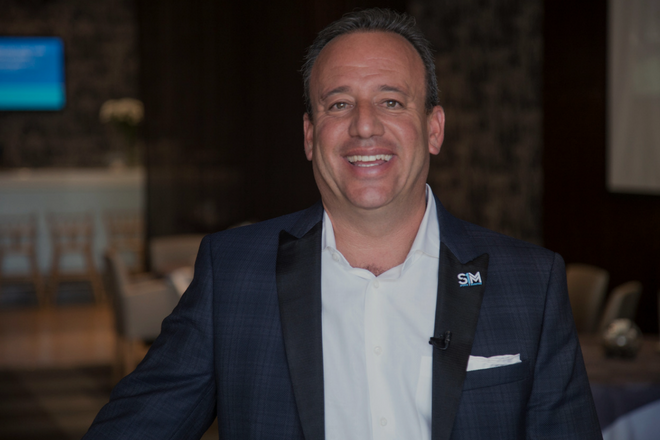“The reality is, the more you succumb to those external influences, the less control you have in your vision and direction. And when you don’t have control in your vision and direction, the magnetic poll that you just described is gone, it doesn’t exist .”
Steve Messa – Co-Founder & Chief Operating Officer at InfluenceLogic; From VidFall to InfluenceLogic; Conscious content & creators; Investing in yourself.
Segment 1: (Length :04:00) – General Updates; Introduction to Steve Messa and his journey as an entrepreneur; From VidFall to InfluenceLogic; Adapting to change within a startup.
Steve’s finer points:
“We’re here for a very finite amount of time. We’ve hit this point in our lives where we understand what we’re doing, we understand how it feels to be connected to what we’re doing, to be emotionally invested in what we’re doing and if we’re going to change the world it starts with people and it starts with helping people get to the same place.”
Health wise, skill wise, you've got to take care of yourself.
“This is interesting because I was in, back on October 26th, 2010, I was on a flight from Miami to Boston and I’m going to drop some knowledge on you but a hole burst in the plane. This is at 30,000 feet and the oxygen masks came down and the air left the plane. We put the oxygen mask, the connection here is, you’ve got to put your oxygen mask on first before you can help others. Ultimately, we went down for about two minutes, just nose diving.”
“I just remember no air in the plane, just looking down, I was praying in my mind and then finally we leveled out, the pilot came on and said, ‘Hey, everyone. I’m so sorry. I’m not sure what’s going on but everything looks good up here, we’re going to be on the ground in 15 minutes.'”
“So we turned around it was just a foot wide hole, we lost cabin pressure. Ultimately the truth is like that moment, it’s like, shit, you’ve got to take care of yourself before you help others because you don’t know how long you’re going to be here on this.”
If we talk about the creative journey, that's where it really started. I mean, it started when I was seven playing the drums but that was like a wake up call that's like you know what, you've got to get moving here.
“It was one of the defining wake up calls. I’ve had a few of them in my life and I would trace that back to like the first real one that started it all.”
“Journey part really starts, so my partner Joel Robinson, he’s from New Jersey, I’m from New Hampshire. I got involved with Wasabi Ventures, this is probably 2013. Really great organization, a VC firm.”
“I was fortunate to start with Wasabi, working at two of its portfolio companies. Eventually I went full time with one, Mosaic Storage Systems. Eventually that was acquired and at that time T.K., Tom Kuegler, one of the partners at Wasabi Ventures, he sat me down and sat Joel down and said, “You know, I think it’s time for you both to start a company.”
“Joel and T.K. had been working on this idea that was VidFall, and ultimately we, this was maybe August of 2014, we kicked off VidFall.”
VidFall is really a, it's almost like a cliche to a T startup story because where we started and where we ended were nowhere similar but if you trace back the logic and the emotional decisions that we've made and the pivots we make, it all makes perfect, perfect sense.
“VidFall started out as a deal website and on the website, you’d go to VidFall and what you’d do is you’d click a product that was up for like an auction . . . But it wasn’t like a traditional auction where the price goes up. it was actually an auction where the price falls because when you go into the auction room on VidFall, you’d start watching video advertisements and we’d partner with ad networks that would put the ads in and every time we’d receive a payout for an ad view we’d apply it to the price of the item. So the price of the item would fall by that much.”
“We realized, you know what, like these ads suck. Like no one wants to watch ads. What if we got influencers to come into the auction room and do a live video broadcast that was branded by the product that was up for sale.”
“So the idea transformed from this deal site to live video events. Ultimately transformed into more of a brand engagement platform, so we’d have influencers hosting these video events.”
That really got us to the next level. We started generating more revenue, the story made sense, and then ultimately, we made the decision, like, the real magic here is with the influencers. The real magic is with the creators and we said we need more of them.
“This was one of the things that was going on at the time. We had an intern. She was a University of New Hampshire student, a foreign exchange student from Vietnam. Her name was Trinh Pham, you can look up. She had a YouTube channel and when we brought her on, she says, “Wow, this is so in line with what I want to do. You’re working with creators and influencers, I love this.” So we were like, “Yeah, this is a perfect fit, come on board.”
“When she started interning with us she had 30,000 subscribers. Three months later when she stopped interning with us she had over 100,000 subscribers and Joel and I are like shit, like I wish we could identify these people all the time. This is happening.”
“So that sparked an internal drive for us to create some software that kind of became the stock market dashboard for social influencers. Mapping growth trends, mapping trends in the content that they’re creating and ultimately I remember we put up a landing page on Reddit marketing promoting this new piece of software and within 24, hours we had over 150 leads from big companies.”
“I remember EA Sports, Ebay Motors came through. I remember like all right, take the landing page down, like let’s go full force at this and we built out the M.V.P. started selling it and we sold it. We’ve got 20 customers using the platform now.”
And ultimately that's transformed into a media company, a network and our first vertical that we've really found a home in. And this is where we've seen the great, great success . . . I'm not saying the story's done, you know what I mean? We're still on our journey but for a relatively small team, we're killing it.
Segment 2: (Length :08:00) – Not listening to the wrong external influences; Creating conscious content; Changing landscape of mainstream media; It’s all about authenticity
Steve’s finer points:
“This gets right back to the journey. You can lead a horse to water but you can’t make them drink. People need to learn for themselves. They need to come to that point where they say, wow, we should be using this ourselves.”
“In the startup world there’s so much glitz and glamour about these big scalable companies and many people around us were saying, no, like you got to go SAS. The model is so attractive. The margins are so great. The scale is so vast. You’ve got to go SAS. Do you really want to be a little company using this yourself.”
The reality is, the more you succumb to those external influences, the less control you have in your vision and direction. And when you don't have control in your vision and direction, the magnetic poll that you just described is gone, it doesn't exist.
“You’ve got to be in control and feel it and ultimately, if it’s a smaller company, I mean, it’s better to have a $20 million small company than a zero dollar SAS company that didn’t make it.”
“You’ve got to be comfortable with your own brand and then it comes like okay, how do you convey that brand over the appropriate media channels and what does that look like and why are you doing that? It’s more than just being that.”
“There’s a level of media consciousness that comes in terms of how you transmit that brand and how you transmit your personal brand and your identity to others across whether it’s social media or whether it’s television whether it’s podcasting, whatever it is.”
“You’ve got to get to that point Yourself where it all originates in the soul and then it’s a game of okay, how does my soul translate over which channels the most effectively to the right audience. When you get to that point it’s like, the wheels are greased and that’s when things start to really click.”
“I think the element of conscious content and content consciousness that we’re seeing now is this realization that the way we think affects outcomes in our life. I affects the reality we live in, it affects those around us and as creators and this is where creator.org comes in which I know we’ll talk about, if you’re going to affect that on a mass level, if you’re going to affect media content on a mass level, if you look at the mainstream media they’re pumping content down from the top.”
If you're Whole Foods and you're growing organic content because you're health conscious, you're going to grow it from the bottom. You're going to start with the soil, you're going to start with the water and you're going to grow it. That's what we need to do with creators
“We’ve got to get creators thinking about content from the ground up and that’s just in terms of where the landscape is. We’re in an unprecedented communication environment. It’s incredible. You can do a podcast. It’s normalized now but 20 years ago it was not. 20 years ago you had the radio. 20 years ago you wanted to get your music on a podcast, you had to pay out radio stations and that still exists today, it’s just losing influence every single day.”
“The kids growing up right now, all they watch is YouTube and the parents are like confused. They don’t know what’s going on. I’m over here, I’m like, as a media person, this is great. The opportunity here for content is massive but at the same time, when you’ve got mainstream culture, it stays mainstream, it stays in the middle.”
When you open up the floodgates which the internet is doing and which creative technologies are doing, you open up both polls. You open up extremely negative content and extremely positive content. You open up content that puts you in the vibration of fear to the extreme and you open up the opportunity for content that puts you on love, hope to the extreme. The question is, where are we going?
“Authenticity. In terms of influencer marketing, that is the core principle that will not kill influencer marketing.”
“It’s all about the rise of the influencer marketplace which is basically like a web meat market to buy and sell influence. I don’t know if I could come up with a better way to remove authenticity from the equation from reducing the idea of creating content entirely down to a transaction.”
“They’re going right to the creative revolution where they can just start figuring out what they love and monetizing it directly. They don’t need to go through the sweat shops or the nine to five that so many people here are still doing. They can figure out a way to make money online. So this is happening all over the world.”
“Back to the main point. It’s really, it’s authenticity. It’s authenticity in the relationships between the brand, the company and the influencer which translates into authenticity between the influencer and the content which translates into authenticity between the content and the consumer of the content. Right?.”
I think a core difference is they want to be so much more and that's the difference between being someone superficial, which could be the bikini person and then someone who knows who they are inside and conveys that correctly through the right media and that's where that magnetic brand that transcends anything.
“If you get to that point, you’re good. You are good because it carries through in everything you do. You attract the right people, the right things fall into place, people want to work with you and the opposite is true.”
Segment 3: (Length :10:00) – Going where your customers are; Believing in your product or service; Investing in yourself.
Steve’s finer points:
“And that isn’t to say that if you’re working on a company that you’ve got to be owning Facebook like no one else. There’s a time and a place for everything. If you go to InfluenceLogic’s Facebook, we’re not doing anything. Why? Because we don’t need to.”
“It’s not part of our business plan right now. Now we’re doing something but we’re not going all in. It’s just not where we’re at. We’re focused on growth through other channels.”
Where are your customers? Figure out where they are? Go where they are, invest there and for us a big part of it is just investing in relationships with influencers which takes us to other channels like creator health that we put together and ultimately creator.org that we've put together.
“Over time you learn. You can’t go with the blanket number of customers because it entirely depends on the nature of your business. How hard is your software to build or how hard is your product to build? What’s the market size? Who are your competitors? Are there any competitors that have put standards and pricing which says how much you can charge, which says how many customers you need to have a profitable business?”
“There are a lot of questions but if you focus on providing value to the customers, I’m not going to say everything will fall into place and magically you’ll have a great business but that makes it much, much easier. Way easier.”
“The biggest shift that came in my mind and in Joel’s mind when we started really providing value was not just on the customers’ end but it was internally. We could embody that value and we could sell that value like nothing else. Before when we’d sell, it almost felt like if you don’t believe in your product, if you’re not 100% on board that this is going to work, it’s like you’re lying.”
It's like you're lying. And you've got to do it to an extent but when you get to a point where like your product actually, when you drink the Kool-Aid if you trace any Fortune 500 company, the person at the top drinks the Kool-Aid because he's got to so the other 2000 employees have to too.
“As an entrepreneur, when you get to that point, now make sure it actually adds value. Don’t you just blind yourself and lie to yourself because that’s not going to work. You’re going to ruin relationships with a lot of people down the road, but find what adds value, embody that value and that takes care of sales. That does it.”
“And I think too, along with content consciousness, one of the fundamental shifts that’s slowly but steadily happening that has a lot to do with money and I went through this myself and when I made this mental shift in myself, things started clicking. And that is a shift from looking at money from a perspective of abundance rather than scarcity.”
“If you look at money through scarcity, you’re never going to make decisions where you invest in yourself. You’re never going to take big risks that pay off and if you believe in abundance, you will and things will just click. They have for me, they have for many other people that I know.”
That's the trick to money. It's a mental game. It is entirely mental which ties back to content as well. The information that we have up here really does affect what we experience day to day. And all it is just realizing it, realizing it and making a choice.
“It might take $15,000 of investment before you figure out what’s going to get you to a 100. It’s not easy and it’s scary but you got to step out. You’ve got to build the parachute on the way down. That’s what it requires or else you play it safe which if you really want to do that, you can but you might look back in 20, 30 years and say, man, I’ve got this nice house and great family and two cars but I never ended up loving and doing what I really, really wanted to do.”
“Segment 4: (Length :03:00) – Hustler Thought of the Day:
Whether you believe you can do a thing or not, you are right. – Henry Ford
GENERAL NOTES:
Steve Messa – Co-Founder & Chief Operating Officer at InfluenceLogic
Steve Messa is Chief Operating Officer at InfluenceLogic: A marketing company that helps businesses drive growth and revenue through content creators and influencer marketing.
Steve is also a current Entrepreneur in Residence (EiR) at Wasabi Ventures, and the founder of Creator.org, an organization dedicated to helping people across the globe find their passion, monetize it, and live more fulfilling lives.
But at heart, Steve is a creator. He traces his creative journey as a creator back to when he was 7 years old and began playing the drums. His experience as a drummer taught him what it takes to be a leader, to set a tempo and follow it with conviction, to lead groups and teams into darkness in order to ultimately find light.
The skills he’s attained by creating bands, founding and growing companies, and serving non-profit organizations has given Steve an ability to create and orchestrate the visions he holds inside his mind quickly and accurately. Over the last two decades, he has learned first-hand that when approaching projects with passion, humility and a positive heart, there are no limits to what we can create.
###
